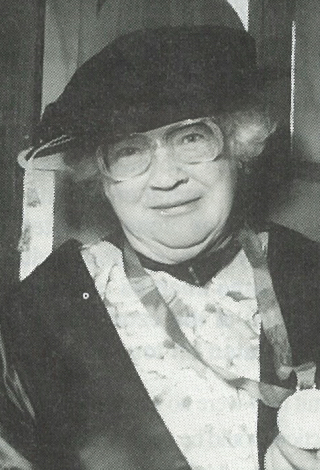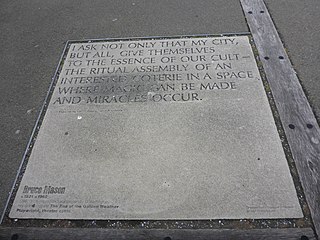| The End of the Golden Weather | |
|---|---|
| Written by | Bruce Mason |
| Date premiered | 1960 |
| Subject | Depression |
| Genre | Drama |
| Setting | Depression era New Zealand |
The End of the Golden Weather is a play by Bruce Mason about a boy's loss of innocence in Depression-era New Zealand. It was written for solo performance by the author but can be performed by an ensemble and was made into an award-winning feature film directed by Ian Mune in 1991. [1] It was workshopped in 1959 and first performed for the public in 1960. The script was published in 1962 and again in 1970 after Mason had performed it more than 500 times. [2] In 1963 he performed it at the Edinburgh Festival.
Set in the fictitious beachfront township of Te Parenga on Auckland's North Shore in the 1930s, the main character is a nameless boy of about 12 (called Geoff in the film), based on the young Mason and a man from his childhood.
The play is in four parts:
In the first half the boy spies on an abortive riot by his unemployed neighbours, and sees them and the local policeman in a new light. In the second, he befriends and tries to help a mentally challenged young man who has taken the name of a famous boxer, Firpo. Firpo wants to run in the Olympic Games and challenges local youths to a race on the beach, which he loses disastrously. Firpo is institutionalised, and the boy's greater understanding of the world's injustices is symbolized by the decay of the broom flowers at the site of Firpo's demolished bach at the end of summer.
Mason took the play's title from that of a novel the narrator in Thomas Wolfe's The Web and the Rock had wanted to write ( [2] p 12). It has become a cliche in New Zealand for the end of summer.
An earlier version of the play was serialised in 1949 as a novella over two parts in literary journal Landfall under the title "Summer's End". [3]
The 1991 film was directed and co-produced by Ian Mune, who also wrote the screenplay with the cooperation of Bruce Mason, although the film was finally made after Mason's death. The film, 104 minutes long, was made with a budget of $NZ3 million, and shot on Te Muri Beach, Takapuna beach and Takapuna Grammar School. Helen Martin says that the film keeps to the spirit of the play, although Mune chose to leave out the Depression aspects (e.g. the 1932 Queen Street riots) and concentrate on the Geoff and Firpo story. [4]

New Zealand literature is literature, both oral and written, produced by the people of New Zealand. It often deals with New Zealand themes, people or places, is written predominantly in New Zealand English, and features Māori culture and the use of the Māori language. Before the arrival and settlement of Europeans in New Zealand in the 19th century, Māori culture had a strong oral tradition. Early European settlers wrote about their experiences travelling and exploring New Zealand. The concept of a "New Zealand literature", as distinct from English literature, did not originate until the 20th century, when authors began exploring themes of landscape, isolation, and the emerging New Zealand national identity. Māori writers became more prominent in the latter half of the 20th century, and Māori language and culture have become an increasingly important part of New Zealand literature.

Janet Paterson Frame was a New Zealand author. She is internationally renowned for her work, which includes novels, short stories, poetry, juvenile fiction, and an autobiography, and received numerous awards including being appointed to the Order of New Zealand, New Zealand's highest civil honour.

Devonport is a harbourside suburb of Auckland, New Zealand. It is located on the North Shore, at the southern end of the Devonport Peninsula that runs southeast from near Lake Pupuke in Takapuna, forming the northern side of the Waitematā Harbour. East of Devonport lies North Head, the northern promontory guarding the mouth of the harbour.

The North Shore is one of the major geographical regions of Auckland, the largest city in New Zealand. The area is defined as the northern shores of the Waitematā Harbour as far north as the Ōkura River.
Sir Ian Barry Mune is a New Zealand character actor, director, and screenwriter. His screen acting career spans four decades and more than 50 roles. His work as a film director includes hit comedy Came a Hot Friday, an adaptation of classic New Zealand play The End of the Golden Weather, and What Becomes of the Broken Hearted?, the sequel to Once Were Warriors.

Northcote is a suburb of Auckland in northern New Zealand. It is situated on the North Shore, on the northern shores of Waitematā Harbour, 4 kilometres (2.5 mi) northwest of the Auckland City Centre. The suburb includes the peninsula of Northcote Point where the northern approaches to the Auckland Harbour Bridge are located, and Northcote Central, the commercial centre of Northcote. Northcote features two volcanic maars.

Takapuna is a suburb located on the North Shore of Auckland, New Zealand. The suburb is an isthmus between Shoal Bay, arm of the Waitematā Harbour, and the Hauraki Gulf. Lake Pupuke, a volcanic maar and one of the oldest features of the Auckland volcanic field, is a freshwater lake located in the suburb.

Milford is a suburb located on the North Shore, Auckland. It is located on northern side of Lake Pupuke. It also has a popular swimming beach, which runs some two kilometres from Black Rock in the south to Castor Bay in the north. The Wairau Creek reaches the sea at the Hauraki Gulf at the northern end of Milford Beach, and its lower tidal reaches host the Milford Marina.

Belmont is a suburb of Auckland, New Zealand, located on the North Shore. The suburb is in the North Shore ward, one of the thirteen administrative divisions of Auckland Council.

The New Zealand national Australian rules football team (Māori: tīmi whutupaoro Ahitereiria o Aotearoa; nicknamed the Hawks ; previously the Falcons, is the national men's team for the sport of Australian rules football in New Zealand. The International Cup team is selected from strict criteria from the best New Zealand born and developed players, primarily from the clubs of the AFL New Zealand. Test and touring squads are selected using similar criteria to other international football codes, additionally allowing players with a New Zealand born parent to play.
The following lists events that happened during 1977 in New Zealand.

Bruce Edward George Mason was a significant playwright in New Zealand who wrote 34 plays and influenced the cultural landscape of the country through his contribution to theatre. In 1980, he was appointed a Commander of the Order of the British Empire. The Bruce Mason Playwriting Award, one of the most important playwrighting accolades in New Zealand, is named in his honour. Mason was also an actor, critic, and fiction writer.

Paul Allan Maunder is a New Zealand film director, playwright and cultural activist. He is best known for his 1979 film of the novel Sons for the Return Home by Albert Wendt, his 1983 play Hemi about the life of James K. Baxter, and his work in community-based theatre.
David Mason, also known by his Māori name, Rawiri Meihana, was a New Zealand rugby league footballer who played in the 1910s. He played at representative level for New Zealand, and Nelson, as a forward, during the era of contested scrums.

Michael John Albert Brown, commonly known as Mick Brown, was a New Zealand judge. In 1980, he became the first Māori to be appointed as a District Court judge, and he was later the first principal Youth Court judge.

Joanna Ruth Randerson is a New Zealand writer, director and performer. She is the founder and artistic director of Barbarian Productions, a Wellington-based theatre production company.
Lynda Chanwai-Earle is a New Zealand writer and radio producer. Her written work includes plays, poems and film scripts. The play Ka Shue – Letters Home in 1996 is semi-autobiographical and is significant in New Zealand literature as the first authentically New Zealand–Chinese play for mainstream audiences.
Helen Campbell Brown was a New Zealand artist. Works by Brown are included in the Museum of New Zealand Te Papa Tongarewa.
The 1991 New Year Honours in New Zealand were appointments by Elizabeth II on the advice of the New Zealand government to various orders and honours to reward and highlight good works by New Zealanders. The awards celebrated the passing of 1990 and the beginning of 1991, and were announced on 31 December 1990.

Devonport-Takapuna is a local government area in Auckland, in New Zealand's Auckland Region, governed by the Devonport-Takapuna Local Board and Auckland Council. It currently aligns with the council's North Shore Ward.